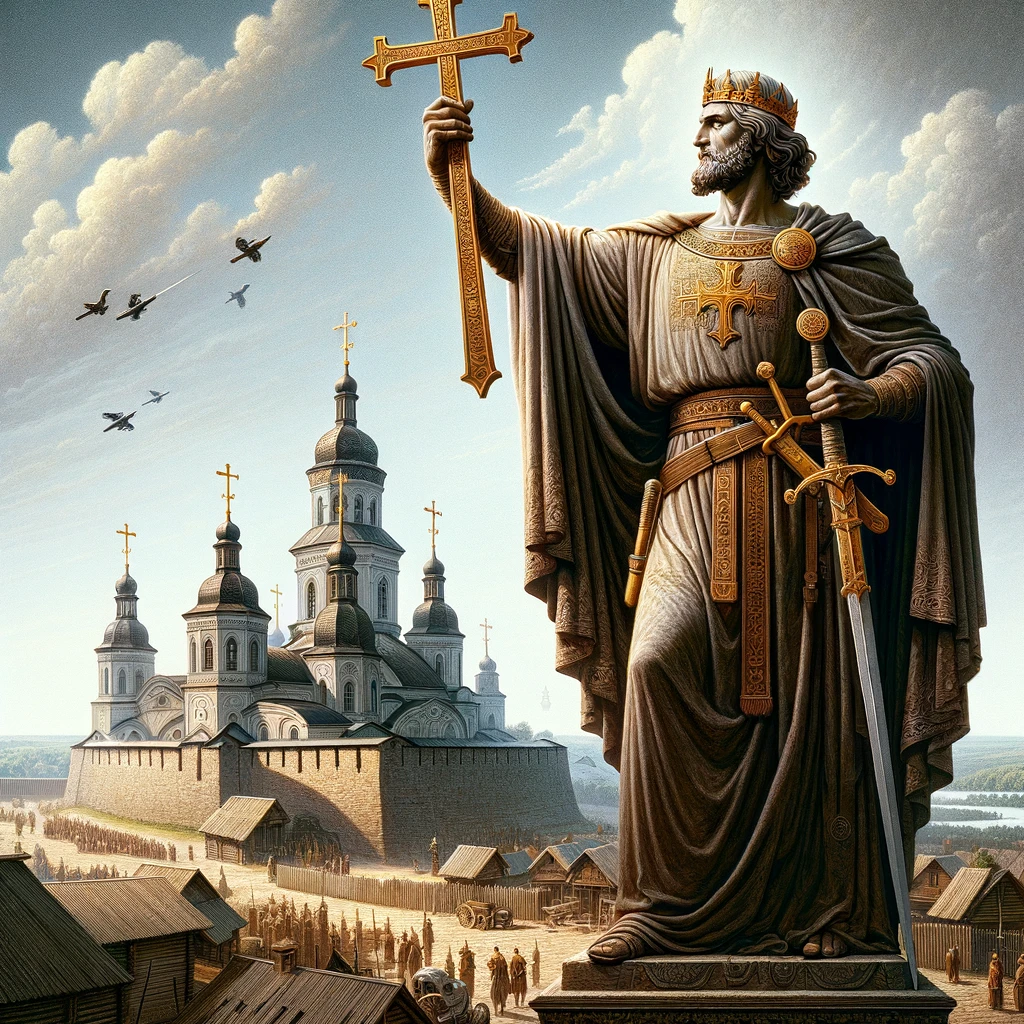
Early Life and Rise to Power
Vladimir the Great, born in 958, was a prince of Novgorod, grand prince of Kiev, and the ruler of Kievan Rus’ from 980 to 1015. His early life was marked by a struggle for power amidst the complex political landscape of the Slavic tribes and Norse warlords. Vladimir’s path to the throne was not straightforward; it involved cunning, warfare, and strategic alliances. His ascent to power in 980, after defeating his brother Yaropolk in a fratricidal war, marked the beginning of a reign that would significantly shape the course of Eastern European history.
Christianization of Kievan Rus’
One of Vladimir’s most enduring legacies is the Christianization of Kievan Rus’. In 988, after a series of military campaigns and negotiations with the Byzantine Empire, Vladimir converted to Christianity and ordered the baptism of his subjects. This decision was not merely spiritual but also a strategic move to strengthen his rule and establish closer ties with Byzantine and other Christian states. The adoption of Christianity laid the foundations for the cultural and religious development of Russia and Ukraine, influencing their history for centuries to come.
Reforms and Governance
Vladimir’s reign was marked by significant reforms that improved the governance and social structure of Kievan Rus’. He established legal frameworks, introduced new coinage, and promoted trade with neighboring nations. His efforts to consolidate power included the division of the realm among his sons, a decision that would have long-term implications for the region’s stability.
Expansion of Territory
Under Vladimir’s leadership, Kievan Rus’ expanded its territories significantly. His military campaigns extended the borders to the west and south, including the annexation of parts of modern-day Belarus, Ukraine, and Russia. This expansion not only increased the wealth and power of Kievan Rus’ but also diversified its cultural and political influences.
Patron of Arts and Architecture
Vladimir’s conversion to Christianity initiated a profound transformation in the cultural landscape of Kievan Rus’. He was a patron of the arts, commissioning the construction of churches and the creation of religious icons and texts. The most notable architectural legacy of his reign is the Desyatinnaya Church in Kiev, one of the first stone churches in Russia.
Legacy and Canonization
Vladimir’s impact on Eastern European history is immense. His reign laid the groundwork for the rise of the Russian Empire and the establishment of Eastern Orthodox Christianity as a major religious force. In recognition of his role in spreading Christianity, Vladimir was canonized as a saint by the Russian Orthodox Church. His feast day is celebrated on July 15, commemorating the day Kievan Rus’ is believed to have been officially Christianized.
Family and Succession
Vladimir’s family life was complex and instrumental in the succession plans of Kievan Rus’. He had numerous wives and children, with his descendants playing crucial roles in the history of Eastern Europe. His policies on succession, while aimed at securing his legacy, ultimately led to fragmentation and internal conflict among his heirs.
Death and Burial
Vladimir the Great passed away in 1015, leaving behind a legacy that has endured for over a millennium. His burial site, though debated among historians, is traditionally considered to be in the Church of the Tithes in Kiev, a city that stands as a testament to his influence and vision.
Conclusion
Vladimir the Great’s life and reign were characterized by significant achievements in state-building, religion, and culture. His decision to Christianize Kievan Rus’ fundamentally altered the trajectory of Eastern European history, embedding a legacy that continues to influence the region’s cultural and religious identity. As both a warrior and a statesman, Vladimir’s impact is a testament to the complex interplay of power, faith, and governance in shaping the destinies of nations.



